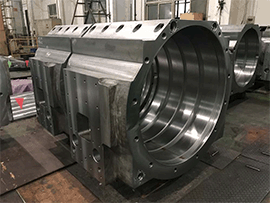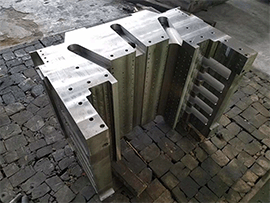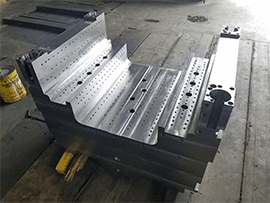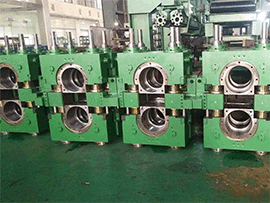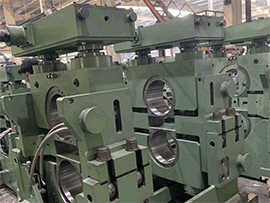 Bearing Chocks
Bearing Chocks
The factors influencing the deformation of Bearing chocks after finishing are various and complex, except for non-machining factors such as casting defects and heat treatment, which are mainly reflected in the following aspects.
- After roughing, the aging is not complete, the internal stress is not released sufficiently, there is internal stress which cannot be ignored, and after finishing, the stress is redistributed.
- The processing process at the finishing stage is unreasonable, and the main processing elements are not handled properly, resulting in deformation of non-finish processing elements after the finish processing elements are processed.
- The larger the retention after roughing, the more the residual amount removed after finishing and finishing, the more serious the tendency of internal stress redistribution.
- As the product manufacturing cycle is short, do not allow the processing procedures, processing workload of the Bearing chocks processing cycle arrangement is too long, the finishing stage of semi-finishing and finishing can not achieve the real sense of separation, the interval is not long enough, the workpiece in the natural environment is not sufficiently aging.
- For the processing of the bore, when the surface roughness requirements are high, when the finishing car can not meet the requirements, only the belt grinding device can be used for grinding. However, since it cannot change the shape error of the bore before grinding, when the shape error of the bore does not meet the design requirements, only partial regrinding can be performed. This method requires a higher level of the machine operator, longer machining time, and may not meet the design requirements.
Based on the above considerations, we will arrange the finishing stage of the housing according to the following process.
Scribing - turning - magnetic probe - boring - milling - scribing - drilling - vertical lathe - pliers - magnetic probe
- Scribing: Review the deformation of the workpiece and mark the machining lines.
- Vertical turning: semi-finishing the bore and the end face, in which the bore unilateral allowance of 0.5-0.6mm, Ra3.2, two end faces finishing in place, requiring both ends of the face of the bore non-perpendicularity error is not greater than 0.05mm, Ra3.2, as a boring and milling machine processing, clamping, measuring benchmark, control the bore cylindricity error is less than 0.03mm, as the final finishing the bore alignment benchmark.
- Magnetic Probe: Magnetic particle inspection of the bore.
- Boring and milling machine: Take the finishing end face as the clamping reference surface, and then correct the bore according to the bore review, milling both sides of the skateboard surface, the top and bottom. Both sides of the slide face of the asymmetry of the error and parallelism of the bore error control within 0.05mm.
- Scribing and drilling: complete the processing of the hole that is not necessary to complete with the boring machine.
- Vertical turning: finishing the bore with the end faces of finishing and semi-finishing bore as the reference.
- Clampers: Tapping and removing flashes and burrs.
- Magnetic probe: the roller bearing seat of the hole, the surface of the magnetic particle inspection.
|
